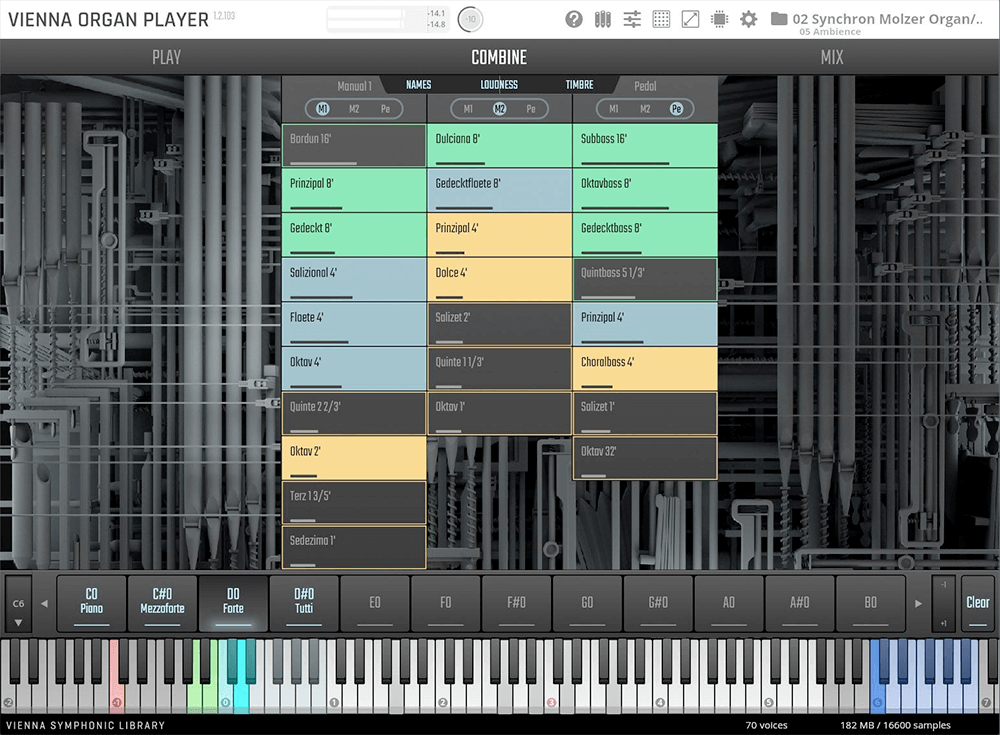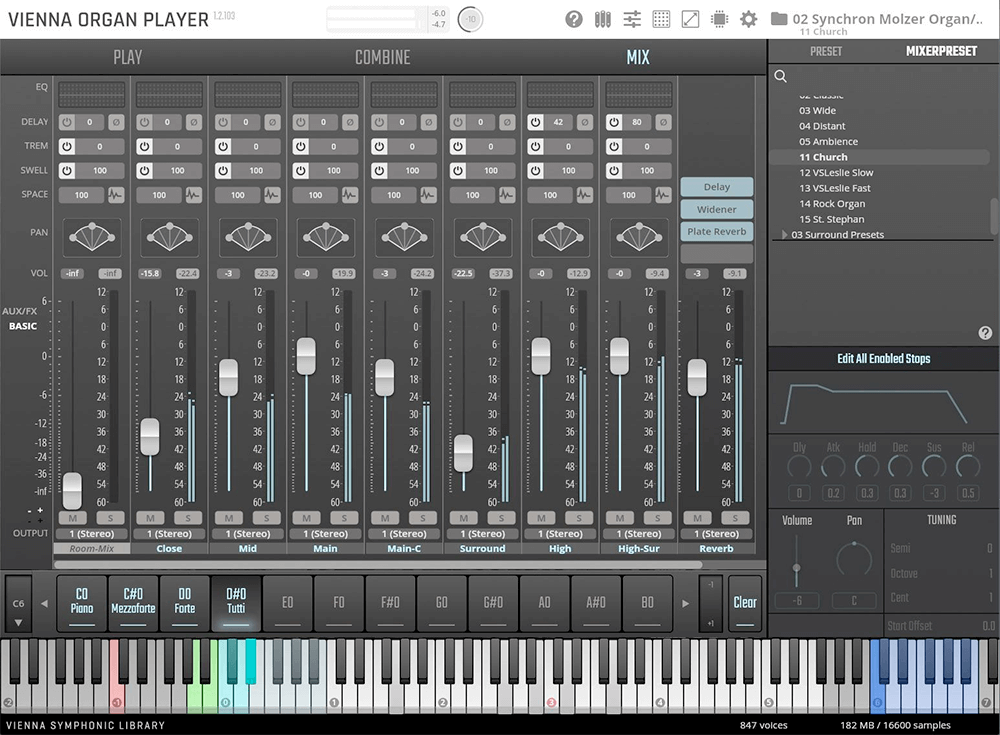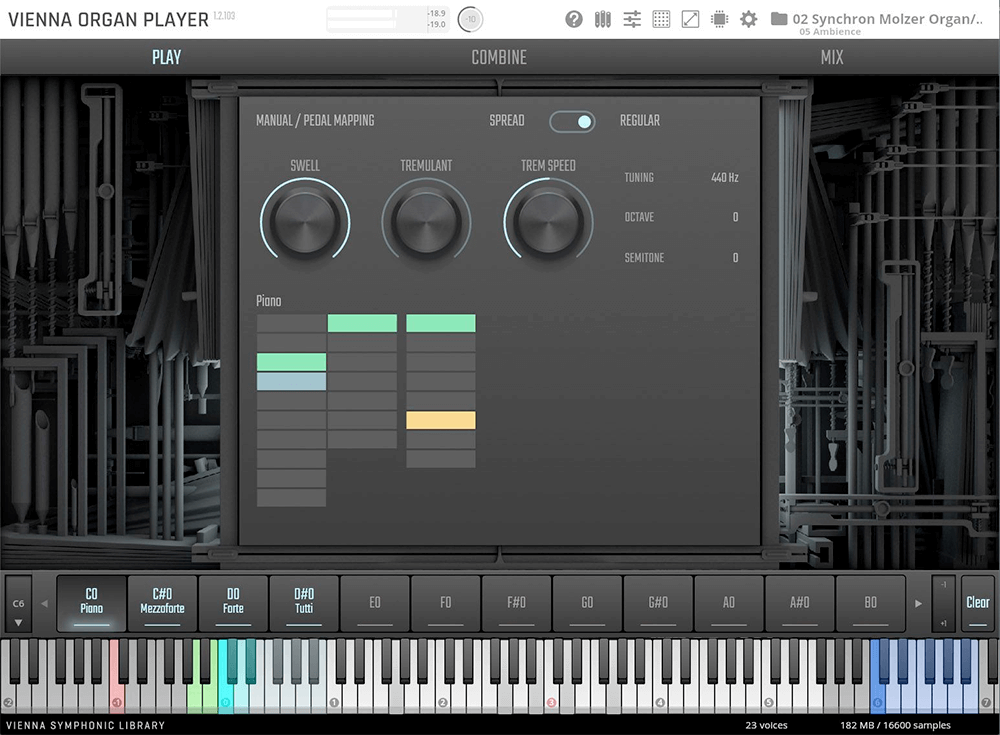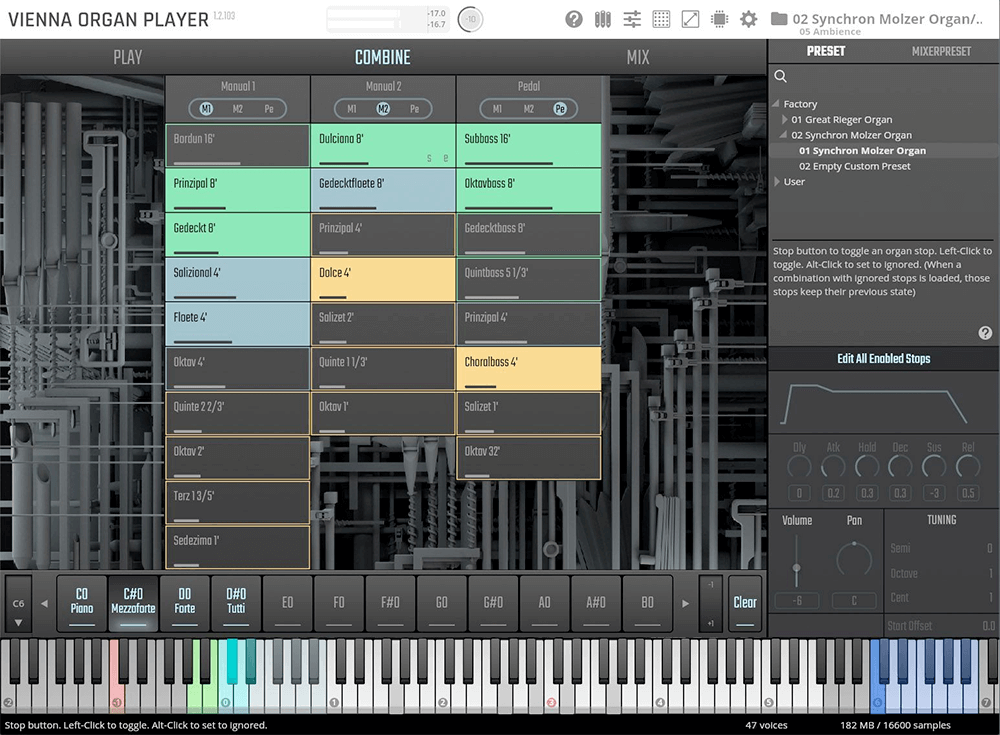The VSL Synchron Molzer Organ is a remarkable salon organ with unique features. It offers multiple microphone positions, allowing you to craft your individual sound. The multi - timbral Vienna Organ Player makes it easy to manage manuals and pedal, and access different stops for creating registrations. With three main tabs, you can have a perfect overview. It also has tremulant and well - designed options, along with masterfully crafted mixer presets. Recorded on the large Stage A of Synchron Stage Vienna, this organ can blend seamlessly with orchestras. Despite its smaller size compared to a typical pipe organ, it has a wide range of dynamics and colors, suitable for various musical styles from chamber music to orchestral and church music. It can also be used as a solo instrument. Built in 1938 by Ferdinand Molzer, it features two manuals, a pedal board, and three rows of flue pipes. It has a crescendo - roller and four fixed combinations restored by Franz Eisenhut. Once owned by Prof. Leopold Marksteiner, it's now part of the Kunsthistorisches Museum's collection. The Vienna Organ Player is flexible and multi - timbral. You can navigate it easily with tabs. Mixer presets like Close, Classic, etc., help you find the sound you want. There are Standard and Full Libraries with different sample amounts and file sizes, and the Full Library offers more ambience variations even in a non - surround setup.




Using the VSL Synchron Molzer Organ is a breeze. First, choose the Vienna Organ Player. You can easily manage the manuals and pedal to access different stops. The three main tabs are your best friends. The COMBINE tab shows all the stops on manuals and pedal, the MIX tab lets you work with microphone signals, and the PLAY tab has useful parameters for live playing. For sound creation, start with the mixer presets like Close or Classic. When it comes to the microphone positions, you have a choice between the Standard and Full Libraries. If you're into live playing or recording into a DAW, use the preconfigured 'Room Mix' presets to avoid overloading your CPU. For rendering an audio track, you can use more microphone signals. As for maintenance, keep it in a stable environment, away from extreme temperatures and humidity. If you have any issues, refer to the official support resources.
